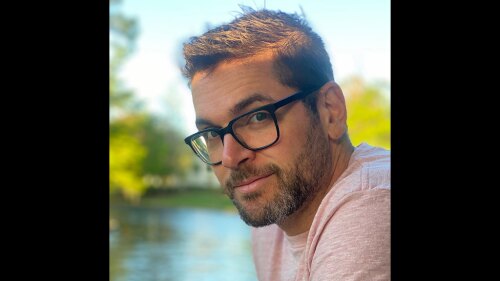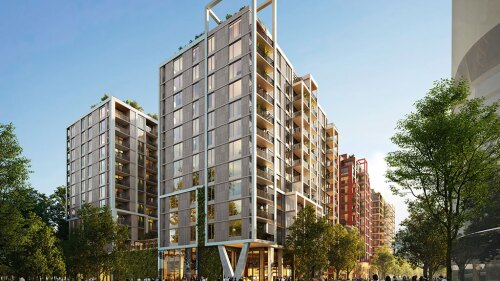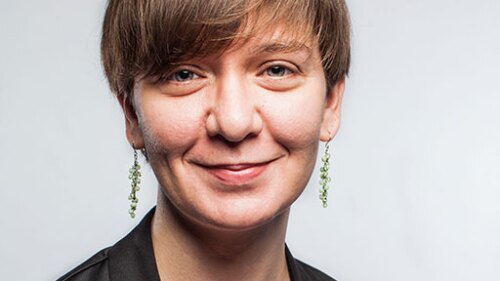Sites in Portland, Oregon, and Seattle, Washington, are home to a painful and complicated history that many neighborhoods in rapidly growing regions are familiar with. To combat the region’s history of racially biased land use and transportation decisions, ULI Northwest joined forces with local leaders to reimagine two sites: one in Tukwila, near Seattle, and the other on the edge of Portland, Oregon. While the two sites are miles apart, both share challenging pasts and have engagement of committed community leaders ready to begin the process of community healing through redevelopment.
In Tukwila, the team is leveraging a planned community-focused health clinic to accompany affordable housing development and spaces for well-being. In Portland, partners are taking steps to reimagine a public site to promote healing and remembrance around culturally significant history.
The collective efforts of ULI Northwest have led to:
- Thinking beyond site boundaries to allow teams to consider project impacts on community health, well-being, and economic opportunity.
- Rewarding projects that build trust with community members in early planning and design stages.
- Ensuring fairness in hiring consultants and subcontractors through the full life cycle of a project.
- Mitigating negative health impacts and costs associated with auto-centric development and transportation infrastructure.
- Investing in cost-effective, equitable, and health-promoting infrastructure that counters past auto-centric investments, including shaded sidewalks, separated bike lanes, and active mobility options.
A Story of Two Sites
Tukwila and HealthPoint
In the Seattle area, ULI Northwest partnered with HealthPoint, a nonprofit community healthcare provider based in Tukwila, Washington. Through this partnership, ULI and HealthPoint examined opportunities at a site where HealthPoint plans to develop a holistic community-focused health clinic, childcare facility, flexible space for nonprofit partners, affordable housing, and community wellness spaces.
“HealthPoint is planning to include affordable rental, affordable ownership opportunities, and possible workforce housing—with the results to be determined in future coordination with a developer,” says Heidi Oien, the ULI Northwest chair for the project team.
HealthPoint acquired the two-acre parcel from the city that was formerly occupied by two motels long known for drug sales, sex trade activities, and overall crime. Tukwila is a multicultural community with a BIPOC majority located 12 miles from downtown Seattle and adjacent to the SEATAC International Airport. The city’s history is interwoven with auto-oriented suburban-style development.
These midcentury single-family neighborhoods and adjacent commercial strips were underpinned by racially restrictive covenants put in by white developers to prevent the migration of people of color out of Seattle. Infrastructure investments, including larger highways, barrier walls, a growing airport, and a regional shopping mall all served to expand access to other people—while Tukwila residents were further isolated, left out of decision making, and displaced.
Following the working session with ULI, HealthPoint is on its way to implementing a vibrant and inclusive future for its site. The organization took the group’s recommendations and has engaged an owner’s representative and a parking consultant with strong relationships in the community to help the team figure out how to tactically plan for the site in the most connected and equitable way. At the time of this publication, a developer has not yet been engaged, but key partners have been identified to move toward the planned uses for the site, including a childcare provider, community food programming, and flexible and permanent office space for nonprofits focused on delivering health-supporting services.
Portland and the Expo Center
In Portland, ULI Northwest partnered with Oregon Metro, the Portland region’s Metropolitan Planning Organization (MPO). ULI Northwest and Oregon Metro explored development opportunities for the 53-acre Portland Expo Center (“Expo”) site just seven miles from downtown Portland. While the site includes an outdated and underutilized 26-year-old multipurpose venue designed for hosting large-scale events, most of the acreage is dedicated to paved surface parking.
Expo is adjacent to an area that was formerly a bustling, predominantly Black neighborhood called Vanport, which was initially constructed to support the shipyards by providing wartime public housing. Largescale flooding in 1948 destroyed the neighborhood, leading to the displacement of thousands of residents.
The Expo site was also a Japanese-American Internment Camp during World War II and is one of the few remaining intact internment structures in the United States. Metro plans to redevelop the site to be economically viable and serve the surrounding communities with intentional and equitable economic development that recognizes the site’s important history.
Enduring Impacts
Although Tukwila and the Portland Expo Center have unique histories, both have long served as the landing spot for marginalized peoples—Japanese Americans whose country and community eventually turned against them in the war, and the Black families who came to the Northwest in search of a better life but were met with racially restrictive covenants, redlining, and limited housing options.
The areas surrounding both Tukwila and Portland Expo Center have been designed to prioritize automobiles and transportation infrastructure instead of people—the effects of which are still felt today.
“Approaching development as place- and community-based, and recognizing the history of the place and the region to create spaces that resonate for the people who live and work in them, truly puts marginalized communities first,” says Andrea Newton, executive director of ULI Northwest.
Today, the broader Pacific Northwest continues to experience a development boom along the I-5 corridor, as newcomers flock to the region for jobs, natural beauty, and a high quality of life. The growth of the region also presents significant challenges: a shortage of affordable land to develop, development pressures on natural and wilderness areas, and transportation infrastructure that can barely meet the demands of a growing population.
The insufficient supply of housing, coupled with a sizable increase in the number of high-paying tech jobs, has made many previously affordable areas of the region unattainable for middle- and low-income families. Longtime residents struggle to pay rising rental costs and property taxes, forcing many to seek housing far away from the city centers.
“We went into the project knowing that our industry takes advantage of boom-and-bust cycles to drive highest- and best-use development that does not tend to support health equity and thriving communities,” Oien and Newton say. “But real estate can be a fundamental source of health equity for individuals, providing resources as well as opportunities for wealth building. The project taught us about the long-term commitment and collaboration required by players in our industry [planning, design, development, financiers] to shift practices. It often takes considerable time engaging directly and building trust with local communities to support long-lasting community success.”
Some of the only places that have remained affordable face significant displacement pressures, a crisis that is felt every day by frontline communities.
A Partnership for Health Equity
ULI Northwest is one of five District Councils examining historic inequities embedded in real estate policy and practice. Working independently and together over 18 months, each local partnership assembled by ULI crafted creative strategies to address the enduring impacts of systemic discrimination on community health and wealth disparities.
“HealthPoint and Portland Metro are natural partners for this work. Their goal from day one was to build trust with affected communities, understand their needs, and co-create solutions to begin repairing community health and wealth disparities,” says William Zeh Herbig, ULI senior director and manager of the Partnerships for Health Equity program. “Both organizations have gone to great lengths to ensure that future development of their sites is community-led and prioritizes the needs identified by residents.”
Broad collaboration within the community co-creation process should begin early—before the development process—and include the developer, community stakeholders, designers, planners, non-profits, and public entities, Oien and Newton say. The experts also note that organizations desiring to develop their land should not hesitate to collaborate with development professionals early on to technically assess what could be possible. These organizations should also know that trust and community building can take years if relationships do not already exist, and that partnering with an entity that has relationships and deep community knowledge is another way to gain trust. Early engagement with community can draw out the needs of a population and inform the entire team how a particular project can truly increase well-being and health.
Tukwila and HealthPoint
HealthPoint has been working to establish strong relationships with the community since 2010, knowing that relationships are essential to the success of their organization and the development of their new clinic in Tukwila. Specifically, HealthPoint’s leadership has formed partnerships with key neighborhood boards, human services groups, and the City of Tukwila.
Since the workshop held with ULI, HealthPoint has further centered its community engagement process around equity by partnering with a Seattle-based nonprofit, Global to Local, and the City of Tukwila, to engage seven foster high school students who can help inform the community about the project.
Beyond just these specific relationships, HealthPoint regularly shows up in the community to listen and learn. HealthPoint is known within the circle of local businesses, schools, and churches, and has heard firsthand what would be most beneficial to residents. In fact, HealthPoint’s commitment to building longstanding community relationships led the City to invite HealthPoint to develop the two-acre property for the future health clinic.
“The onus should not be on community members to collaborate with landowners or real estate developers if it’s not of interest or a part of their mission, or if they don’t have the time or financial bandwidth,” Oien says. “But landowners and developers need to try to open their process to community members who are interested in co-creating the outcome. Our Action Agenda for Change recommends supporting community organizations with funds to sustain longer-term community involvement in the development process.”
Portland and the Expo Center
Metro followed a similarly intensive and robust community engagement approach over the last 13 years. The organization hired a consultant, Cascadia Partners, to help engage with communities who had cultural ties to the area—namely Japanese Americans, Black, and Indigenous people—to hear what they wanted to see on the Expo site.
Metro partnered with the Japanese American Museum of Oregon to appropriately recognize and honor the tragedy that occurred on the Expo Center’s grounds. They also worked with other community groups to reach surrounding Black and Indigenous populations. There were various perspectives shared, with additional input provided via a public engagement survey to gauge broader community input on the Expo site’s future.
Through several rounds of engagement meetings, a set of “guiding principles” were developed and approved by both the Metropolitan Exposition and Recreation Commission and the Metro Council. The guiding principles will guide the consideration of future uses on the site:
- Honor historical and cultural legacy
- Ensure financial sustainability
- Maximize economic prosperity
- Create financial and community wealth-building opportunities for Black Americans, Japanese Americans, urban Indigenous, and other communities of color
- Recognize, respect, and restore the wealth and interconnectedness of the environment, land, water, and people
Some next steps for the Expo site—partly as a result of their work—are underway, which will to consider what kind of memorial could honor past history of the site and multiple stakeholders, Oien and Newton say. “The work and lessons learned from this project will inform future technical assistance, helping us work for community first. A good first step for all is to internalize these learnings and approach future projects with a different lens.”
An Action Agenda for Change in Real Estate
To address the health disparities and economic challenges facing communities along the I-5 corridor, ULI Northwest recommends a multifaceted approach to equitable development, including the following:
- Thinking beyond site boundaries to allow teams to consider project impacts on community health, well-being, and economic opportunity
- Recognizing projects that engage communities in early planning and design stages
- Ensuring fairness in hiring consultants and subcontractors through the full life cycle of a project
- Mitigating negative health impacts and costs associated with auto-centric development and transportation infrastructure
- Investing in cost-effective, equitable, and health-promoting infrastructure that counters past auto-centric investments, including shaded sidewalks, separated bike lanes, and active mobility options
Editor’s Note: ULI Northwest is one of five district councils participating in ULI’s District Council Partnerships for Health and Racial Equity Project led by ULI’s Building Healthy Places program with support from the Robert Wood Johnson Foundation. Working over 18 months, each council, in partnership with local stakeholders and real estate leaders, crafted strategies to address legacy impacts of systemic discrimination in land use and real estate. Learn more about the collective story of impact at uli.org/partnerships.








